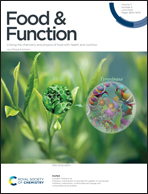Catechinic acid, a natural polyphenol compound, extends the lifespan of Caenorhabditis elegans via mitophagy pathways
Abstract
Catechinic acid (CA), widely present in tea and fruits, has vital biological and pharmacological properties. CA plays an important role in the regulation of lifespan. However, the mechanism behind its anti-aging properties remains poorly characterized. In the present study, Caenorhabditis elegans (C. elegans) was used as a model organism. It was found that CA induced mitophagy which prevented the accumulation of dysfunctional mitochondria with age and profoundly extended lifespan. Notably, CA significantly improved the fitness of aging worms, particularly the treatment slowed age-related decline in observed spontaneous movements. Furthermore, CA was found to eliminate dysfunctional mitochondria in the gut and muscle cells, and demonstrated that the lifespan-prolonging effects of CA can be attributed to mitophagy along with the likely regulation of the genes bec-1 and pink-1. The results of this study indicated that pharmacologically induced mitophagy has a profound impact on aging, providing a novel therapeutic intervention against aging and age-related diseases.



 Please wait while we load your content...
Please wait while we load your content...